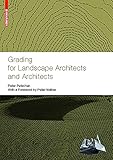Grading for Landscape Architects and Architects / Peter Petschek.
Material type: TextPublisher: Basel : Birkhäuser, [2012]Copyright date: ©2008Description: 1 online resource (221 p.)Content type:
TextPublisher: Basel : Birkhäuser, [2012]Copyright date: ©2008Description: 1 online resource (221 p.)Content type: - 9783034609876
- 624.152
- TA715 .G43 2008
- online - DeGruyter
| Item type | Current library | Call number | URL | Status | Notes | Barcode | |
|---|---|---|---|---|---|---|---|
 eBook
eBook
|
Biblioteca "Angelicum" Pont. Univ. S.Tommaso d'Aquino Nuvola online | online - DeGruyter (Browse shelf(Opens below)) | Online access | Not for loan (Accesso limitato) | Accesso per gli utenti autorizzati / Access for authorized users | (dgr)9783034609876 |
Browsing Biblioteca "Angelicum" Pont. Univ. S.Tommaso d'Aquino shelves, Shelving location: Nuvola online Close shelf browser (Hides shelf browser)

|

|

|

|

|

|

|
||
| online - DeGruyter Kreativwirtschaft Schweiz : Daten - Modelle - Szene / | online - DeGruyter Style First. | online - DeGruyter Geländemodellierung für Landschaftsarchitekten und Architekten / | online - DeGruyter Grading for Landscape Architects and Architects / | online - DeGruyter ETFE : Technologie und Entwurf / | online - DeGruyter Adrian Frutiger – Schriften : Das Gesamtwerk / | online - DeGruyter Adrian Frutiger – Typefaces : The Complete Works / |
Frontmatter -- Contents -- Foreword by Peter Walker -- Introduction -- History of Site Grading -- Landform -- Site Grading 101 -- Stormwater Management and Site Grading -- Digital Site Grading -- Landscape Stabilization -- Grading on the Construction Site -- Practical Examples -- Appendix -- Backmatter
restricted access online access with authorization star
http://purl.org/coar/access_right/c_16ec
"The contour line is the only precise and accurate means for representing the free and natural formation of terrain in the plan; so learn to use this instrument!" Professor Hans Loidl, Landscape Architect and Teacher The two design elements of landscape architecture are plants and terrain. While the subject of vegetation is well documented by numerous publications, there is a lack of technical literature in the field of grading. This volume fills that gap: History, forms of terrain, basic principles, digital modeling, slope reinforcement systems, construction site implementation, and practical examples – all are treated in detail by the author. Short problems, systematically organized and arranged in increasing order of difficulty, enable the reader to apply what he or she has learned. The exercises are suitable for self-study. Together with the large amount of practical information provided by the book, they also enable architects to become familiar with grading as an important design element of landscape architecture.
History, forms of terrain, basic principles, digital modeling, slope reinforcement systems, construction site implementation, and practical examples—all are treated in detail by the author. Short problems, systematically organized, enable the reader to apply what he or she has learned.
Mode of access: Internet via World Wide Web.
In English.
Description based on online resource; title from PDF title page (publisher's Web site, viewed 29. Nov 2021)


